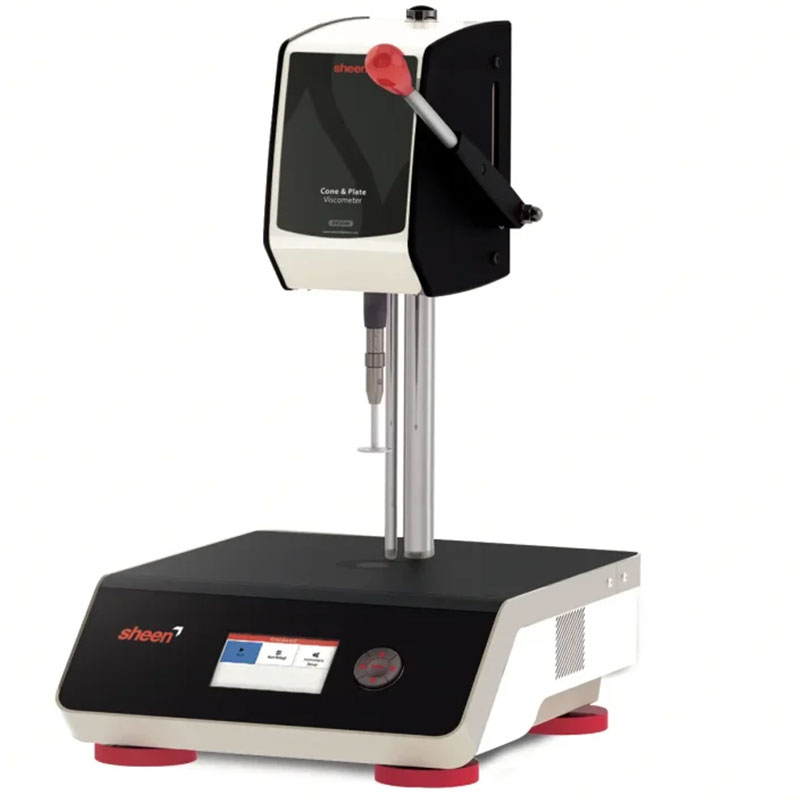We’re here to help
Let us help you
TQC Sheen Cone & Plate Viscometer

Manufactured by TQC Sheen
The CP1 cone and plate viscometer is mainly used for viscosity measurement of liquid and semi-solid samples, and is especially suitable for high-viscosity samples such as petroleum, paint, coatings, and adhesives.
The cone and plate viscometer principle uses the shear method to measure, typically using a rotating cone or disc-shaped rotor to cut the fluid and measure the required torque. From the measured torque and the geometric parameters of the rotor, the viscosity of the fluid can be calculated.
As non-Newtonian fluids exhibit different viscosities relative to the shear rate applied, the Cone and Plate Viscometer tightly controls it to 10,000S-1 (B.S./ ISO requirements) or to 12,000S-1 (ASTM).
• Ensure the cone and plate are clean.
• Place a small amount of material to be tested on the plate (see later for recommended sample volumes).
• Lower the cone gently and fully onto the plate — any excess material will flow out from the side of the cone. The time taken for the cone and sample to reach the plate temperature will depend on the sample and ambient temperature. At least 15 seconds should be allowed and longer if the sample temperature is significantly different (this can be timed automatically).
• Press the start switch.
• Allow the instrument to run for the pre-set run time. The result is displayed on the screen until the next run is started.
• Record the result as required.
• Raise the head and clean the cone and plate.
• Lower the plate onto the cone to keep it at the plate temperature before the next test.
Fit a CP1 cone to the instrument as shown below:
Overload Error: The instrument measures the torque applied to the rotating cone and automatically halts (displaying an overload error) if the torque value exceeds the maximum allowed.
For further information on the instrument’s operation, maintenance, and tips to help you obtain good results, please navigate to the user manual near the top of this product listing page.
Applications: Sample preparation, viscosity testing.
Materials: Inks and coatings.
Let us help you